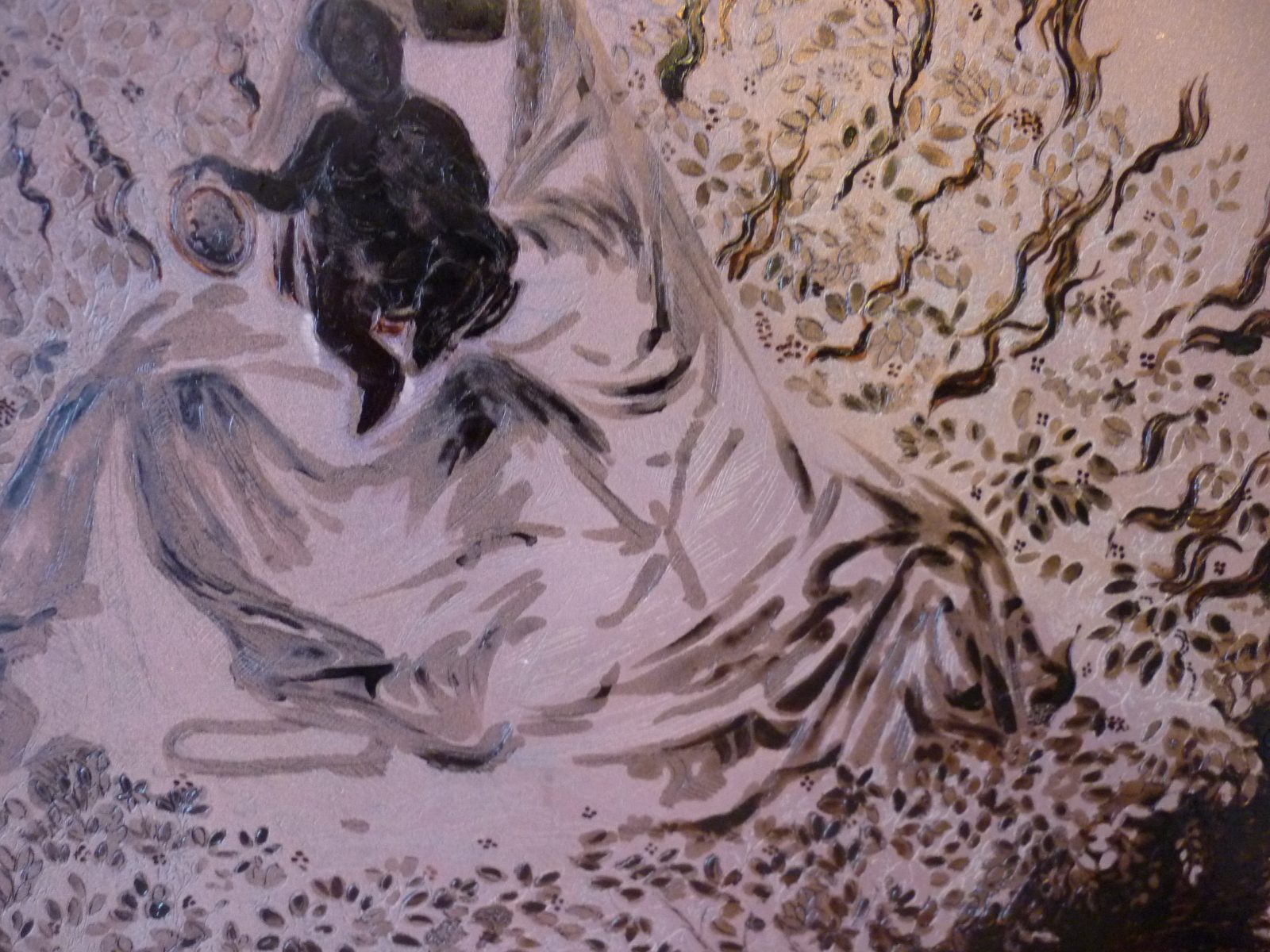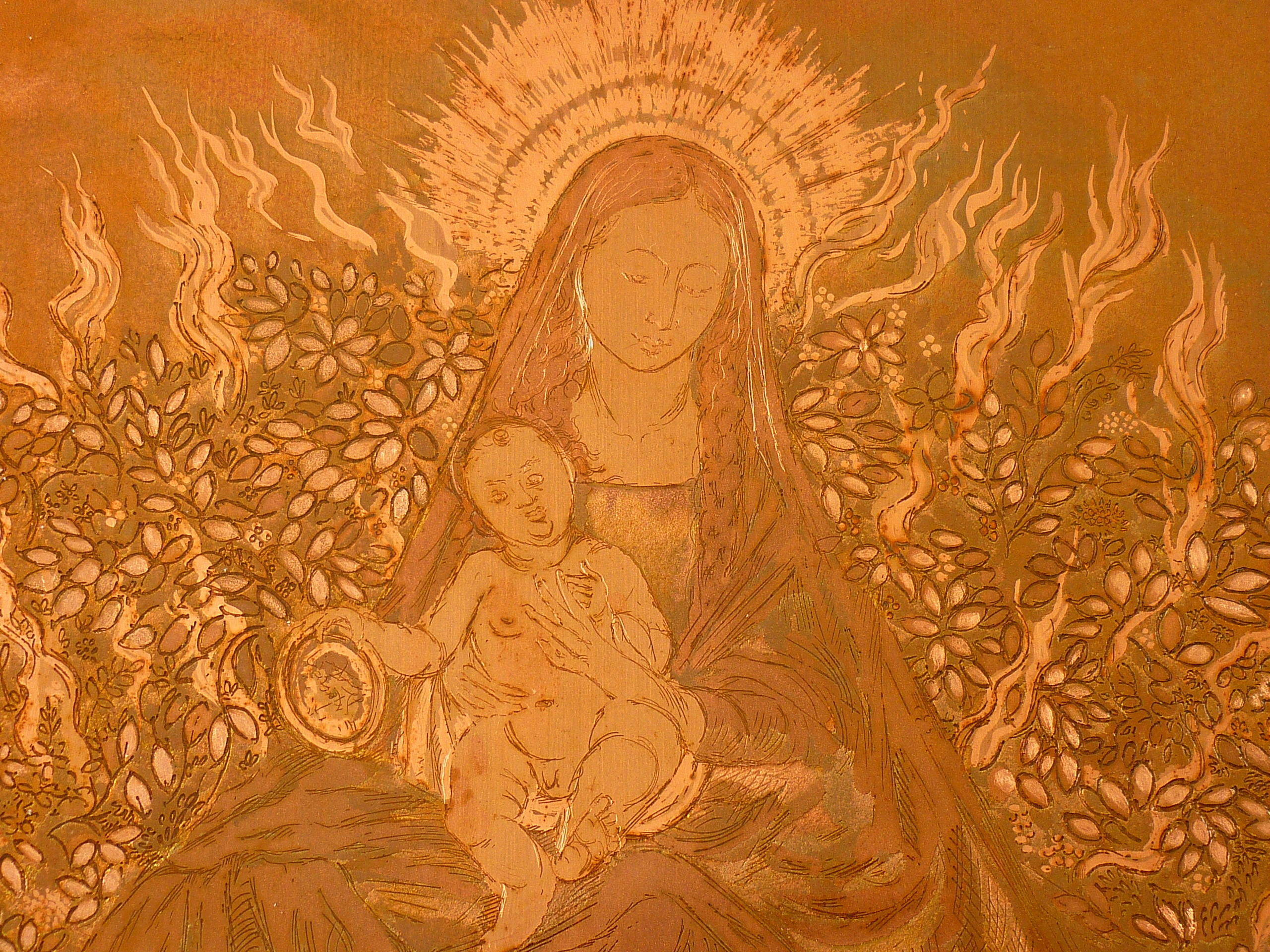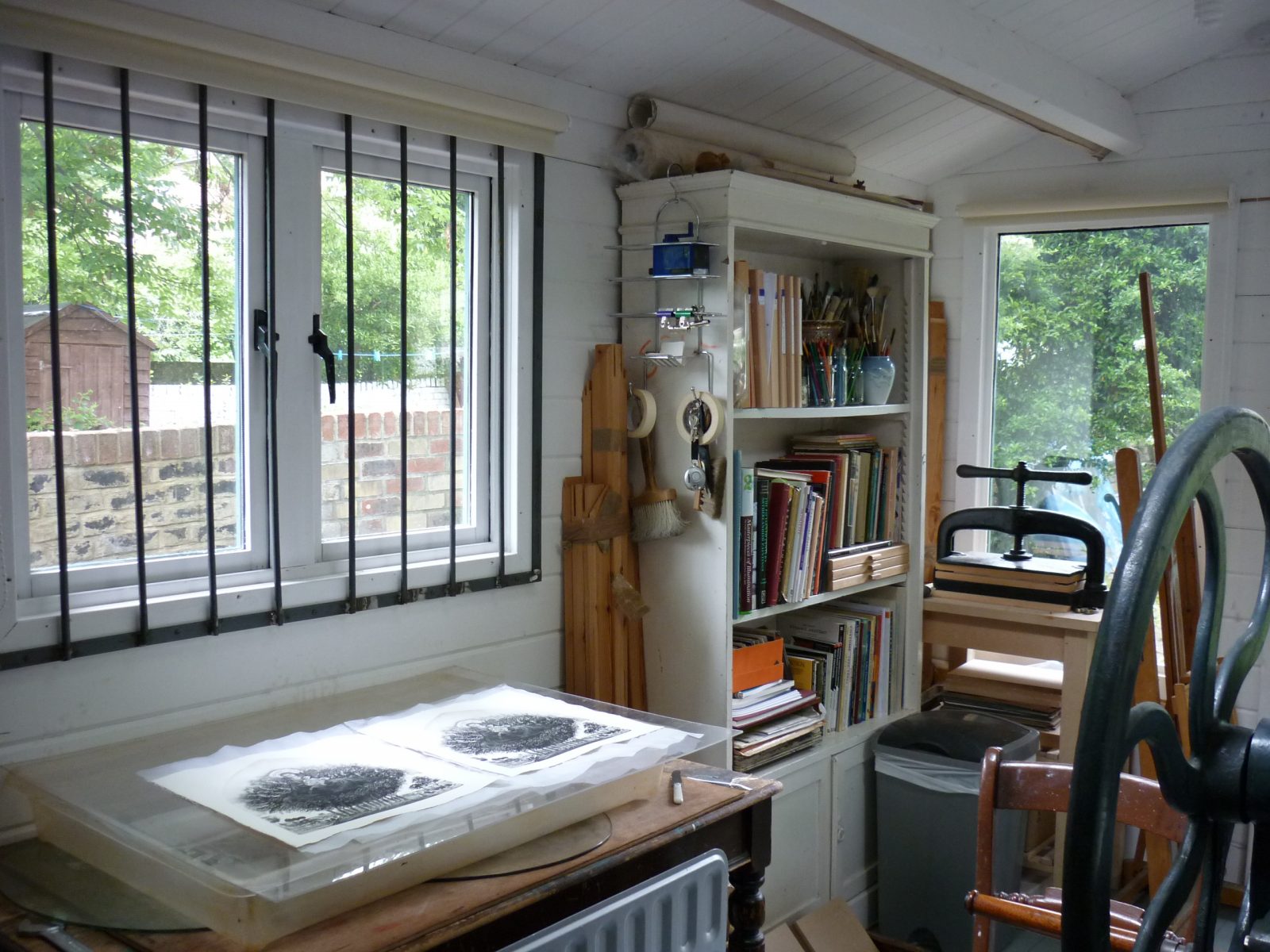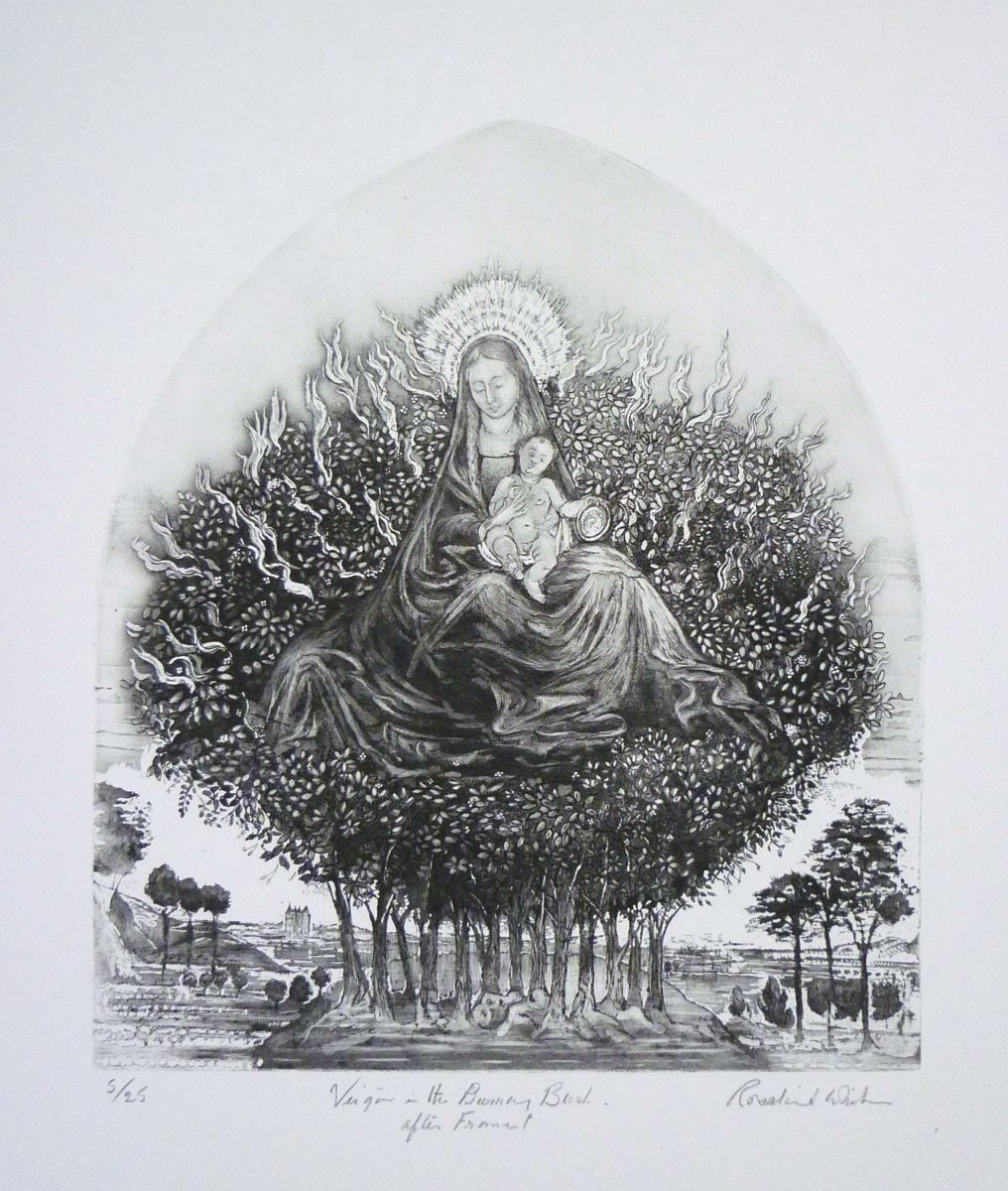Virgin in the Burning Bush
Rosalind Whitman
-

1. Burning Bush plate in progress
-

2. Burning Bush, etched copper plate, detail
-

3. Burning Bush editioning
-

4. Burning Bush final
Through the spirit received from on high, the earth hatches the minerals in her womb as the mother her unborn child. This invisible spirit is like the reflection in a mirror, intangible, yet it is at the same time the root of all the substances necessary to the alchemical process or arising therefrom.
Basileus Valentinus (15th century) paraphrased by Jung (2005)
Titus Burckhardt draws a parallel between the materia prima (primary matter) and the Virgin Mary. I have chosen to create specific artworks belonging to the Christian/ Marian tradition, not only because these comprise much of my artistic and cultural heritage, but also because I find myself endlessly enamoured of them. I wish to interrogate this attraction although I am aware that the material I have fixed upon is challenging to a contemporary sensibility regarding gender.
My series of four etchings entitled: Annunciation, Night Sea Journey, Tempest and Matinee Jacket, reflect a personal interpretation of experiencing: apprehension of conception; pregnancy; childbirth; and, nurturing a baby.
La Vièrge Ouvrante
Nature has neither core nor skin, She’s both at once, outside and in.Johann Wolfgang von Göethe
I set out to rework an anonymous medieval object, ‘La Vièrge Ouvrante’, created between 1375 and 1425, now housed in the Cluny Museum in Paris. The original is a wooden, devotional figurine, a little more than a foot in height representing an image of the Virgin Mary seated upon a raised platform, her right arm supporting the figure of the Christ child, while in her left hand she carries an orb. Externally the figurine functions like a normal religious sculpture of the period. Its interior, however, is hollowed out in the form of a cupboard whose hinged doors open to reveal a gilded, interior space. Inside, carved in relief, the figure of God appears enthroned with a smaller relief of Christ on the cross in front of him.
The idea began to take hold in which I imagined myself creating my own three-dimensional image based upon the Vièrge artefact. I wished to explore aspects of pre-Christian feminine symbolism in relation to the Christian thinking around Mary. With guidance from my friend and colleague Dr.Aleksandras Alekseyevas, I intended also, to translate the image from wood into bronze.
I felt my piece should first and foremost be about the feminine condition and motherhood, which I see as being primal, mysterious and even rather frightening. It brings to mind the ancient epochs, preceding the advent of the great monotheistic religions, in which, the Great Mother - Goddess of life and Death - was worshipped. In my re-interpretation of the artefact I wished to draw the viewer towards a fundamental sense of mystery and wonder, and a primary sense of connectedness in time, space, spirit and matter. Viewing through my “alchemical lens”, I wanted to situate human origins in relation to a recognition of a materia prima, with (as in the alchemical conceptualisation) emphasis on the unification of spirit and matter.